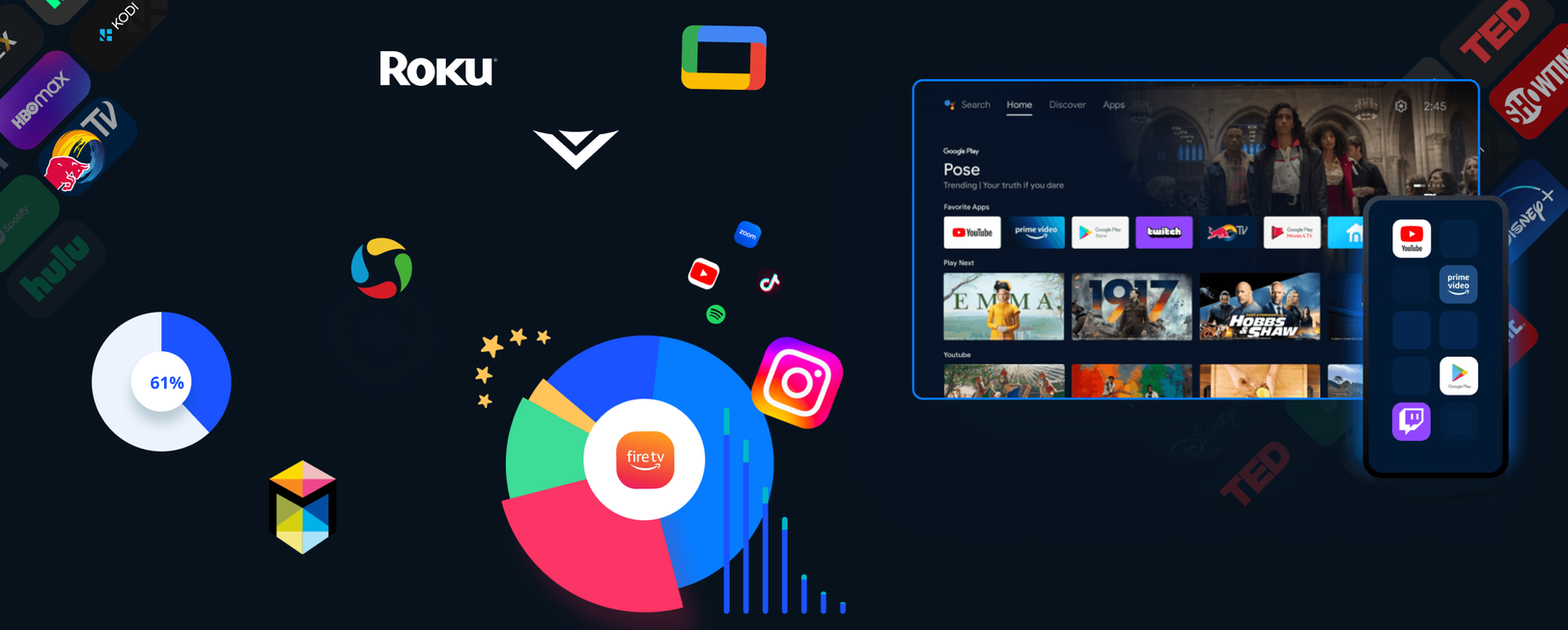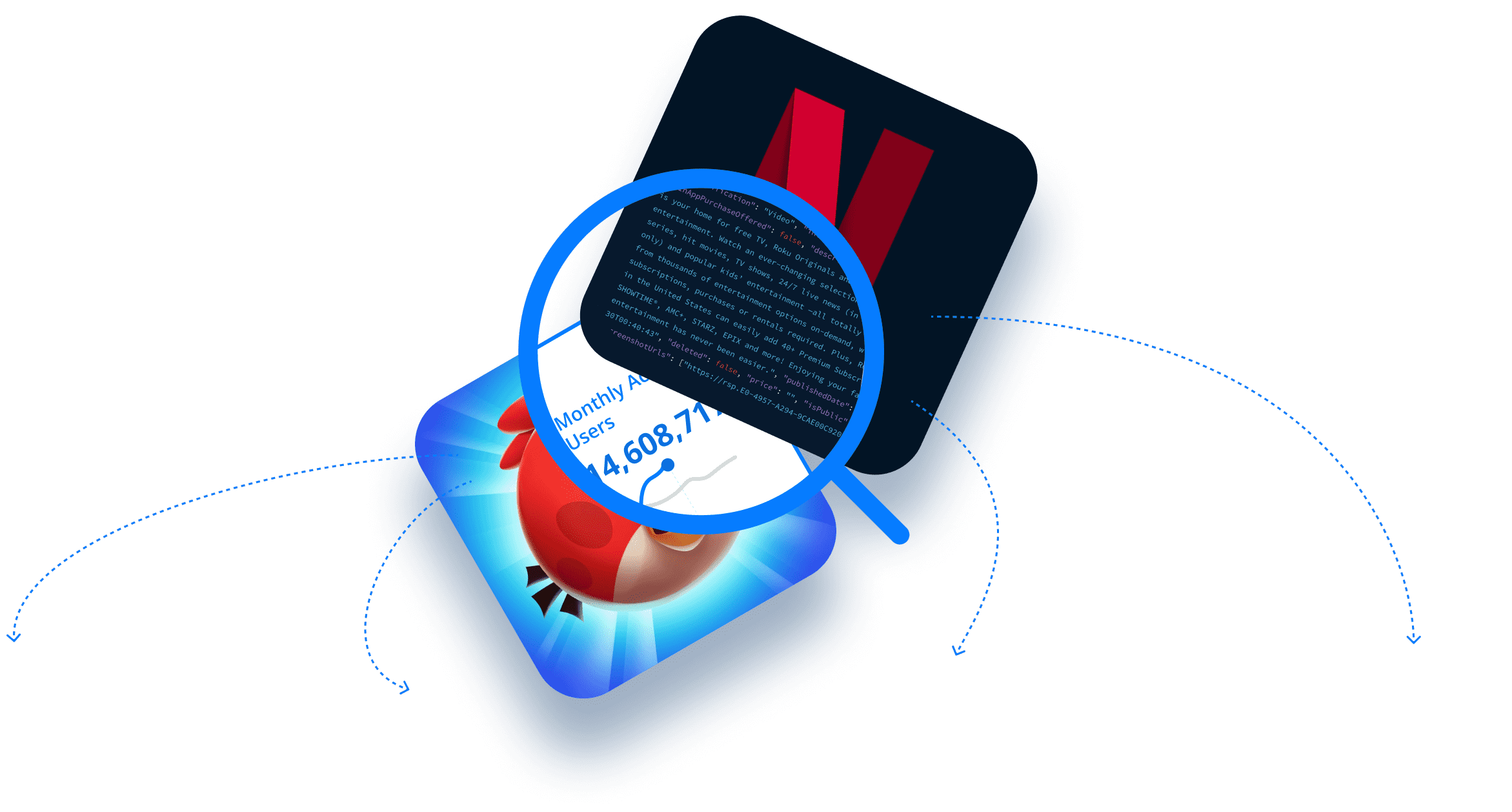One of the more common questions that we at 42matters receive is whether it’s possible to get app insights for app analysis. The answer, of course, is yes! The 42matters Explorer — along with our catalog of useful APIs and file dumps — delivers everything from download statistics to technical insights.
Our data, which is refreshed daily, is based on a comprehensive analysis of:
- 3,385,076 Android apps and 756,413 Android app publishers
- 1,748,101 iOS apps and 1,342,394 iOS app publishers
- 6,925,293 unpublished Android apps and 2,087,865 unpublished iOS apps
(This data was pulled August 21, 2020. For the latest numbers, visit our store stats pages.)
In this article, we’ll answer the following questions:
- How can app analysis help businesses?
- What sort of app insights are available?
- How to get started with app insights and app analysis?
We’ll go over three business cases, including how app developers, ad networks, and market researchers can leverage app data to improve the quality and profitability of their work. And then we’ll demonstrate how the 42matters Explorer can help businesses gather app insights, such as publisher details, localization information, and monetization practices.
So, with that out of the way — let’s get started!
How can app analysis help businesses?
Plainly put, app analysis provides businesses with competitive advantage.
Consider this: there are currently over five million mobile apps across Google Play and the Apple App store. The mobile app economy is on pace to generate over 117 billion dollars in revenue in 2020.
This means that the mobile landscape provides everyone from entrepreneurs, to startups and established businesses with tremendous opportunity. It also means competition is stiff and any advantage could be the difference between success and irrelevance.
In such an environment, app insights, in facilitating informed decision-making across the business, often provide the leg up necessary to stand out from the competition. The question is, how can your business take advantage of them?
Let’s look at three examples:
- How app insights can help developers: Mobile app insights — such as download trends, rating histories, review sentiments, SDK usage, localization and monetization strategies — can be used to help developers understand user behavior and competitor activity.
For instance, our Explorer platform provides data on every iOS and Android app. A publisher could use it to:- Compare average daily and monthly downloads
- Determine which SDKs their competitors are using
- Use the review analysis tool to figure out what users like and dislike about certain apps
- etc.
- How app insights can help mobile ad networks: We’ve already written quite extensively on this topic, so we’ll just say this. By conducting analyses on apps of interest, ad networks can improve the quality of their lead generation process, boost mobile ad performance, and avoid ad fraud. If you’d like to learn more about how, you should check out these blog posts:
- How app insights can help market researchers: By conducting app analyses, market researchers can both analyze the success of specific apps and identify general trends in the greater mobile app economy. Moreover, app insights can help market researchers understand other sectors; finance, education, entertainment, gaming, sports, photography, etc.
For example, we published an article comparing the UBS, Credit Suisse, and Swiss Raiffeisen Bank apps to demonstrate how mobile app insights provided by 42matters could be used for market research in the financial sector. Check it out.
Think your business could benefit from mobile app insights? Let’s chat.
What sort of app insights are available?
As we noted earlier, the 42matters Explorer tracks everything from download statistics, to rating and review insights, publisher details, localization information, categories, IAB categories, monetization insights, permissions, SDKs, app-ads.txt, and more.
Not only does the Explorer enable you to filter all Android and iOS apps based on these insights (more on this in a moment), it also enables you to examine each app individually via the app pop-up feature. Check out the WhatsApp Messenger pop-up:
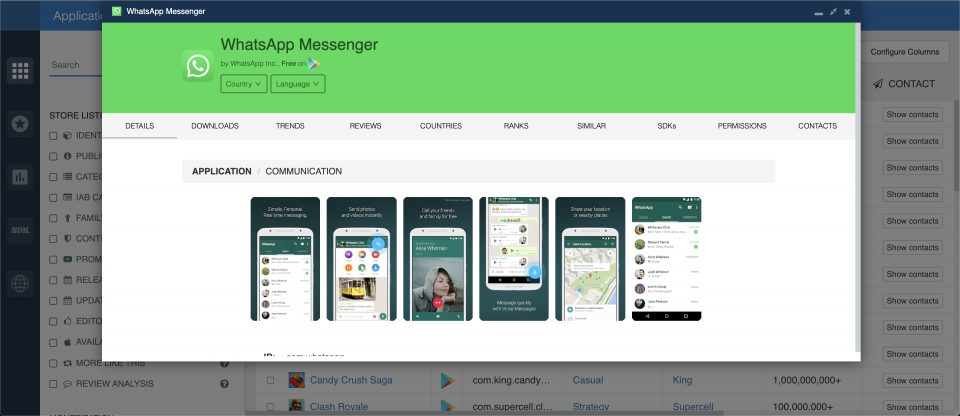
This provides users with a snapshot of the app in question, offering basic details like the app’s ID, which IAB categories it falls under, whether it’s published, when it was last updated, etc:
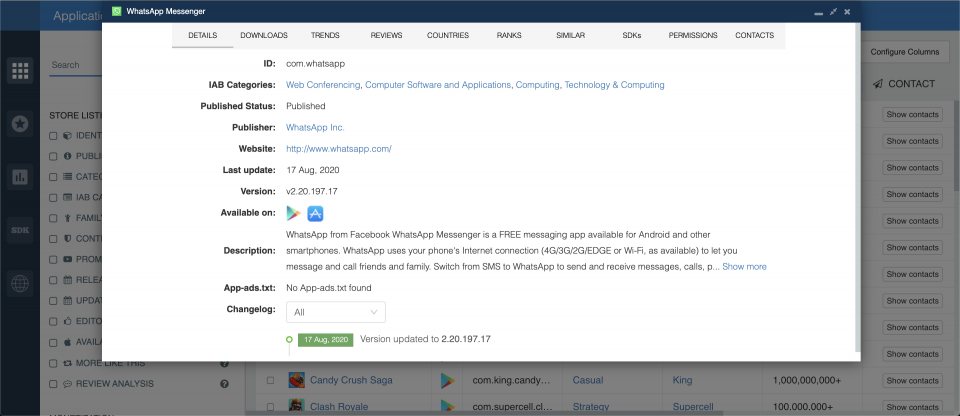
It also provides extensive changelogs for each app:
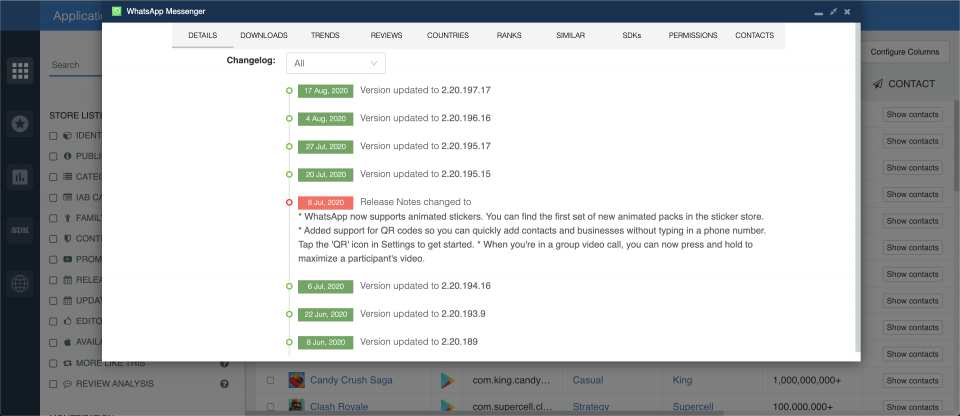
Daily, monthly, and total download estimates:
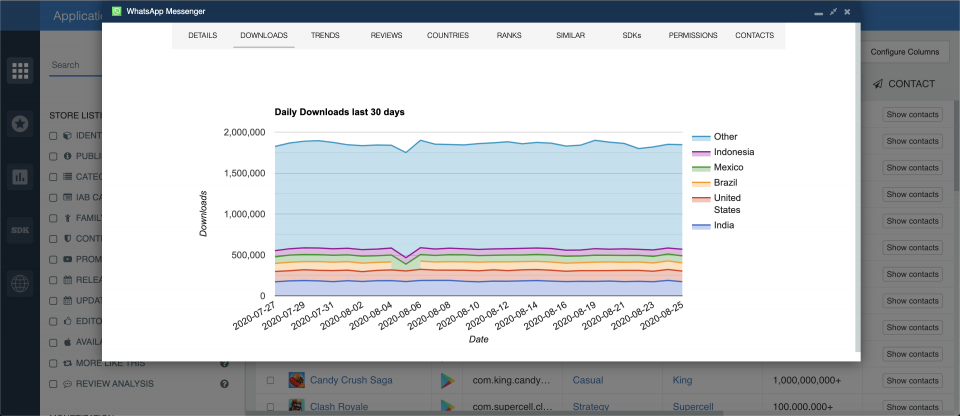
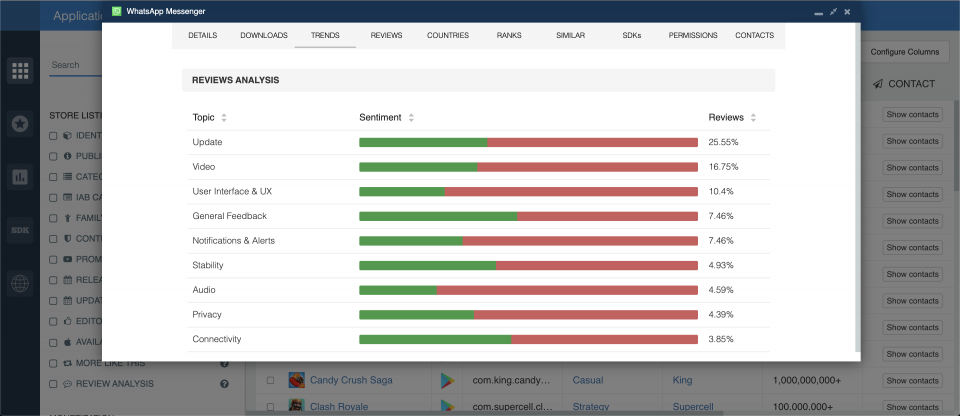
SDK insights:
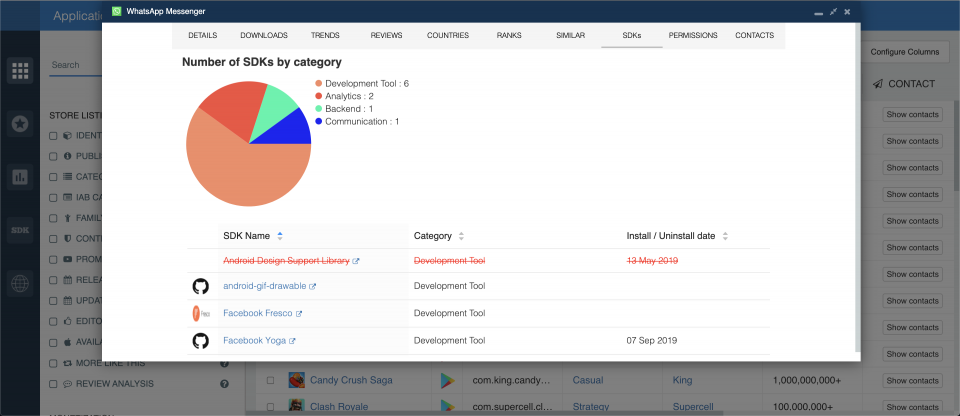
Permissions:
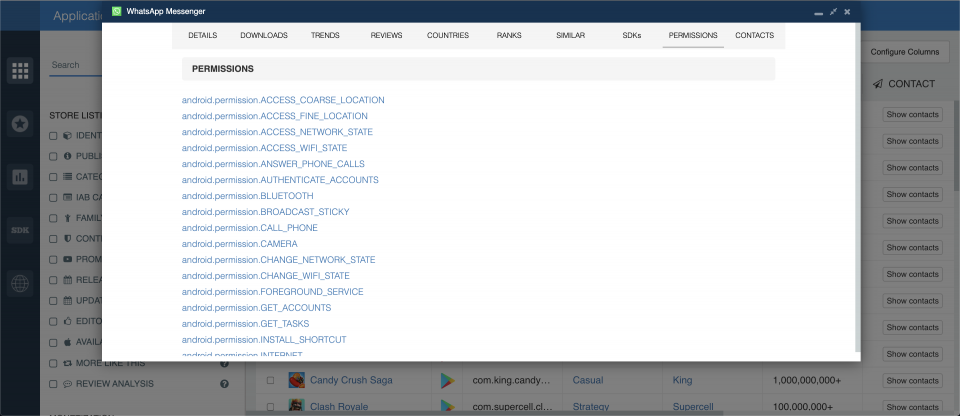
And more!
We’ve covered a number of these in previous blog posts; for example, we’ve written an entire post dedicated to downloads and covered ratings and reviews in a post about app analytics. So, today, we’ll focus on something new. We’ll show you how to conduct app analysis on the 42matters Explorer to gather the following app insights:
- Publisher details
- Localization information
- Monetization insights
Now, before we get started, you might want to try it out for yourself. If so, you should:
- Register for a 14-day free trial
- Activate your account and launch ‘Explorer’
- Select either ‘Android Apps’ or ‘iOS Apps’ from the ‘Explorer’ section of the ‘Launchpad’
- Follow along with the explanations below, or experiment on your own
Please note that if you’re using a trial version of the Explorer, you will not have access to the full 42matters database. As such, it might be worthwhile signing up for the real thing.
With that, let’s get going.
1. How to get app publisher details:
To kick off, let’s take a look at what the Explorer can tell you about app publishers. Scroll to the developer section, then tick the box next to Developer Name. This will make it possible for you to search for apps developed by a specific developer. In this case, we searched for all Android apps developed by Twitter:
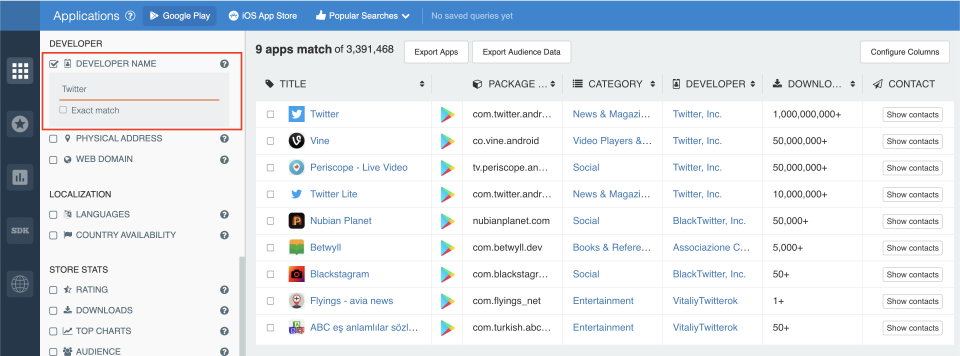
By ticking the box next to Physical Address, you can filter apps by where their developers are located. Search by region, country, state, city, street address, etc. This feature can be used for anything from market research to lead generation. Here, we’ve looked up all Android apps whose developers are based in the tech capital of the United States: Palo Alto, California.
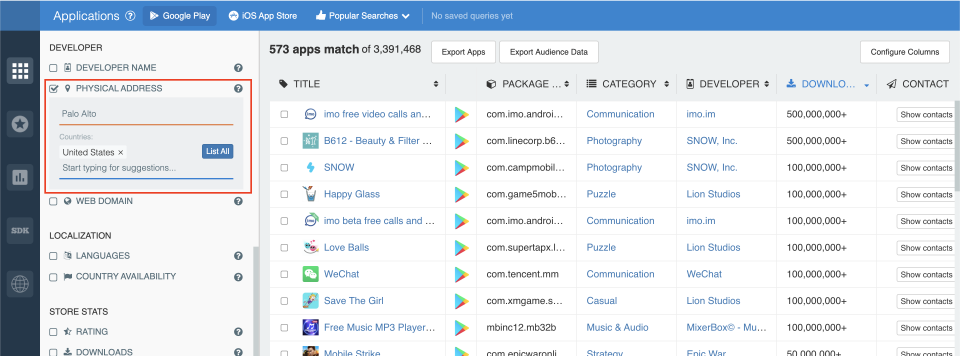
Last, you can search by Web Domain. This is perhaps more useful than it sounds. For instance, while many big name developers have their own websites — and finding them is as easy as searching the developer name and adding ‘.com’ — some smaller developers will use their Facebook, Twitter, or LinkedIn pages as their websites. As such, searching for ‘Facebook,’ like so...
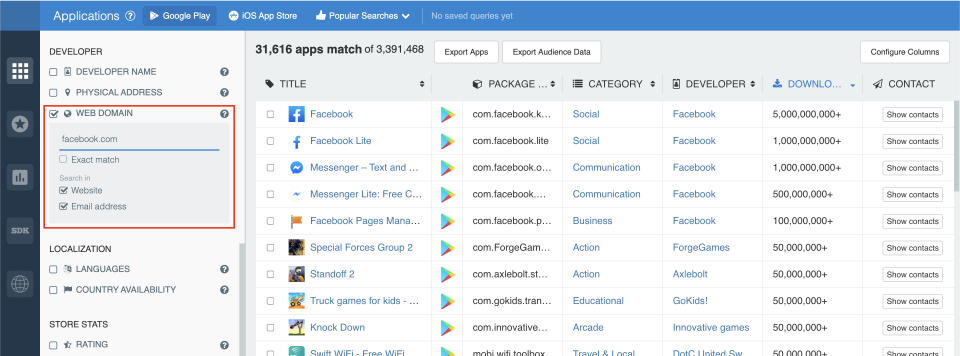
Will yield results for developers that use their Facebook page as their main point of contact, like so…
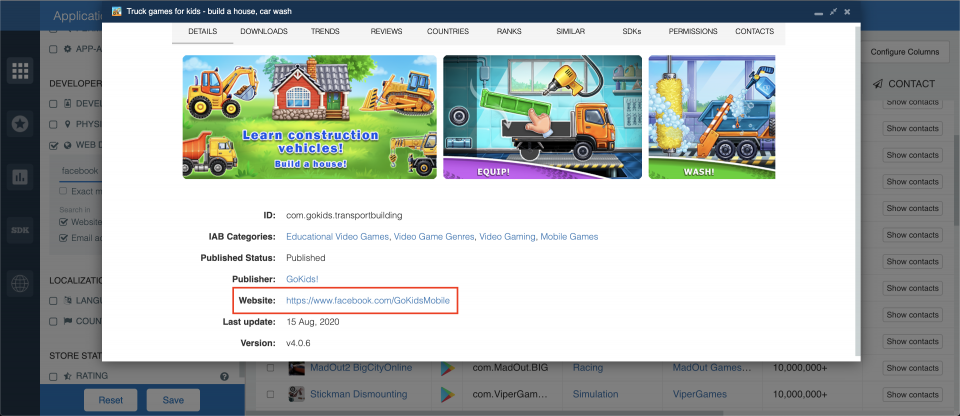
2. How to get app localization information:
Next up, localization! App localization refers to the process of changing or refining an app in order to appeal to specific geographical or regional markets. While this typically refers to technical alterations like language and country availability, app localization may also occur at the content level.
By using the Explorer to analyze app localization practices, you’ll be able to make an educated guess about which markets they’re targeting. As a consequence, you’ll also be able to identify gaps in their audience that competitors could potentially exploit.
To see which apps are or are not available in specific Languages, tick the box next to Language in the Localization section. From here you can find apps available in specific languages, apps that are available in ONLY specific languages, or apps that are not available in specific languages. Check it out. These are Android apps available in Japanese, but not English:
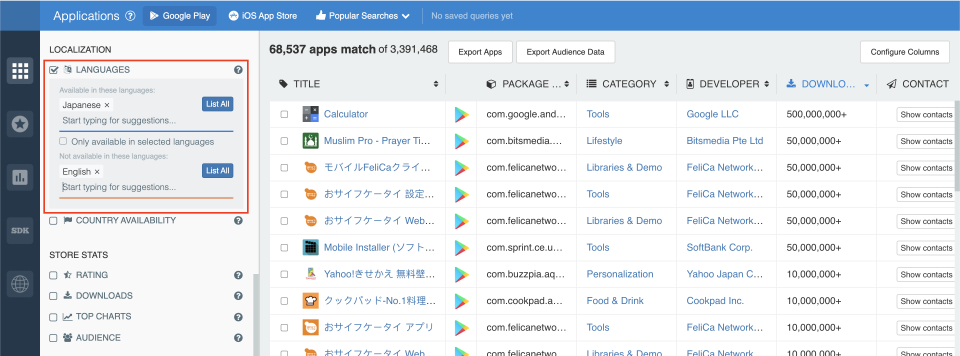
You can use the Country Availability filter in a similar way. Here are all Android apps that are available in Portugal, but not Spain:

3. How to get app monetization insights:
Last, but certainly not least, monetization! Determining how apps generate revenue can be useful for a number of reasons. For instance, if you’re an app developer, you can see how some of your biggest competitors are making money; if you’ve built an ad network SDK, you can use the Explorer to identify target audiences and improve the way you market your SDK; if you’re an ad network, you can use the Explorer to generate higher quality leads. The list goes on, touching everything from market research to advertising!
While the 42matters Explorer does not capture every way in which an app might be monetized, it nevertheless offers three critical app monetization insights. The first is Price. To see how much app developers are charging for their apps, the 42matters enables you to filter apps by price. As you can see in the image below, this includes filters for all free apps, all paid apps, and all apps that fall into a particular price range. Here are all Android apps that cost between $10.00 and $1,000.00:
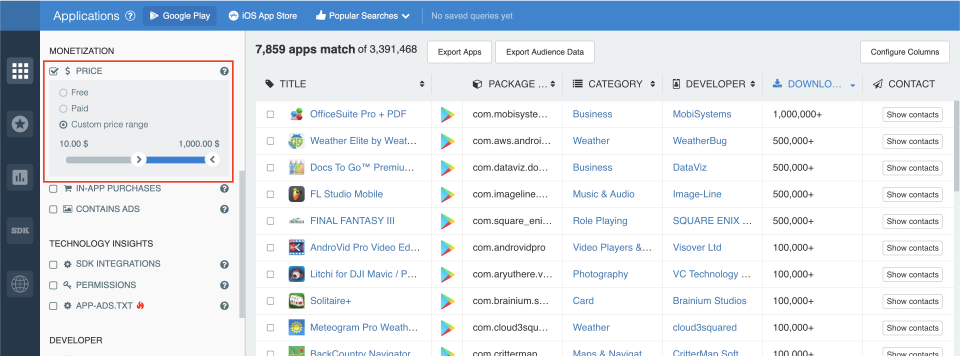
The second monetization insight provided by the 42matters Explorer is whether apps offer In-App Purchases, such as services, products, or media. Here are all Android apps that offer In-App Purchases:
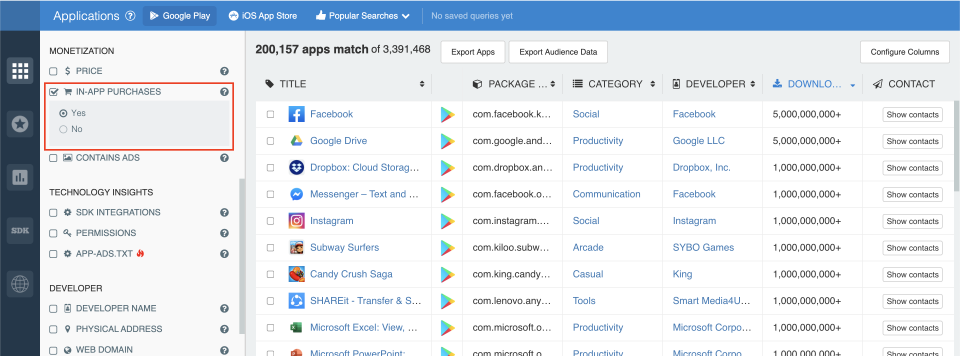
Third, and last, the Explorer enables users to filter apps by whether or not they Contain Ads. As you can see, the image below depicts all Android apps that leverage in-app advertising:
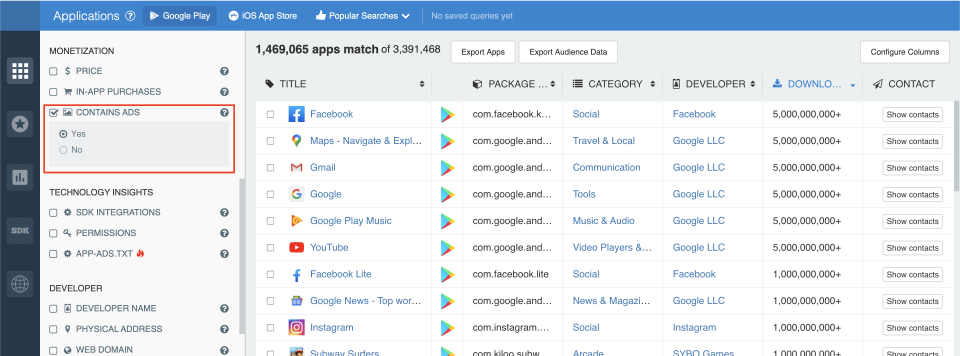
How to get started with app insights and app analysis...
At 42matters, we provide app insights, data, and analytics via a host of useful APIs, file dumps, and the 42matters Explorer.
The Explorer, which is free for 14-days, is an app market research tool that provides a comprehensive look at app trends and statistics. This includes in-depth, visual insights into app download trends, categories, IAB categories, metadata, rating and review analyses, and more. You can also download this data as CSV and leverage it however you like — in your own algorithms, analyses, products, studies, etc.
To learn more about mobile app analytics from 42matters, schedule a free demo with one of our experts. We’ll show you how they can improve your business!


